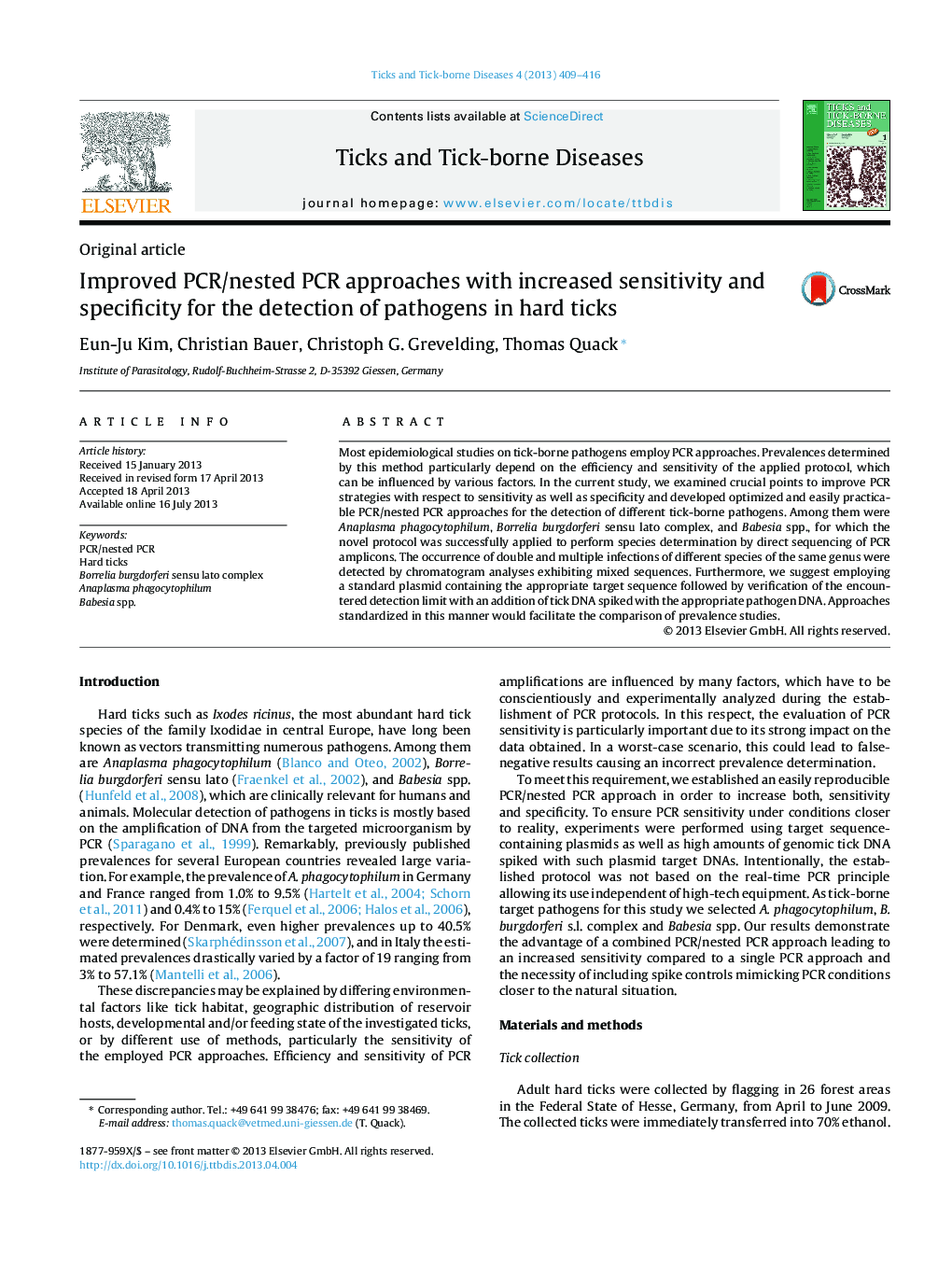| Article ID | Journal | Published Year | Pages | File Type |
|---|---|---|---|---|
| 2474213 | Ticks and Tick-borne Diseases | 2013 | 8 Pages |
Most epidemiological studies on tick-borne pathogens employ PCR approaches. Prevalences determined by this method particularly depend on the efficiency and sensitivity of the applied protocol, which can be influenced by various factors. In the current study, we examined crucial points to improve PCR strategies with respect to sensitivity as well as specificity and developed optimized and easily practicable PCR/nested PCR approaches for the detection of different tick-borne pathogens. Among them were Anaplasma phagocytophilum, Borrelia burgdorferi sensu lato complex, and Babesia spp., for which the novel protocol was successfully applied to perform species determination by direct sequencing of PCR amplicons. The occurrence of double and multiple infections of different species of the same genus were detected by chromatogram analyses exhibiting mixed sequences. Furthermore, we suggest employing a standard plasmid containing the appropriate target sequence followed by verification of the encountered detection limit with an addition of tick DNA spiked with the appropriate pathogen DNA. Approaches standardized in this manner would facilitate the comparison of prevalence studies.
